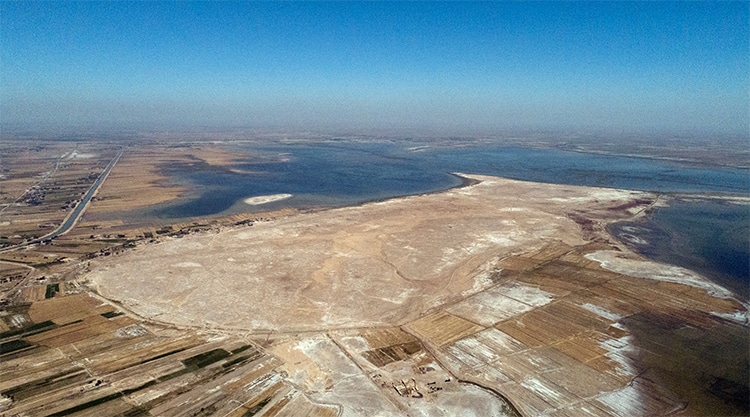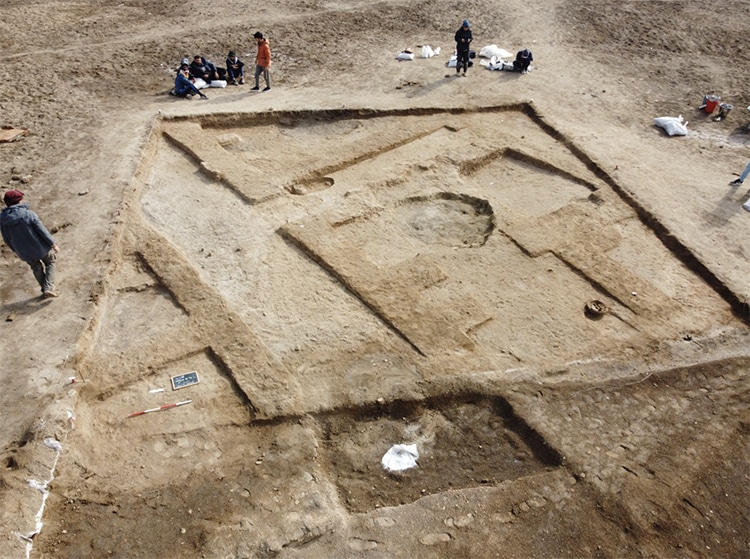The closest trench shows the tavern with a clay refrigerator called a zeer, an oven, and benches.
At least, that is what new findings on the important archeological site of Lagash in Iraq indicate.
These findings can tell historians and archeologists a lot about daily life in a busy, ancient industrial center.

The closest trench shows the tavern with a clay refrigerator called a “zeer,” an oven, and benches. (Photo:Lagash Archaeological Project)
Lagash is one of the largest archeological sites in southern Mesopotamia.
The city dates to the Early Dynastic period from 2900 to 2300 B.C.E.
The urban center was part of a trio of cities that formed a powerful polity.

The Lagash site, bottom center. (Photo:Lagash Archaeological Project)
Excavations have uncovered ceramic kilns and trenches where wet clay was stored.
Tables and benches nearby suggested a workroom.
A surprising feature of the neighborhood was the tavern.

Rectangular trenches which held clay, which was used by craftsmen. (Photo:Lagash Archaeological Project)
Its partially open air, partially kitchen area.
To uncover the tavern, the team employed modern technologies.
They then removed the dirt in microstratigraphic layersvery thin slices with surgical precision.
We were happily astounded.
Whilepreserved foodhas been found in other ancient locales, this find reveals more about working-class life in ancient Mesopotamia.
The Lagash site, bottom center.
Rectangular trenches which held clay, which was used by craftsmen.